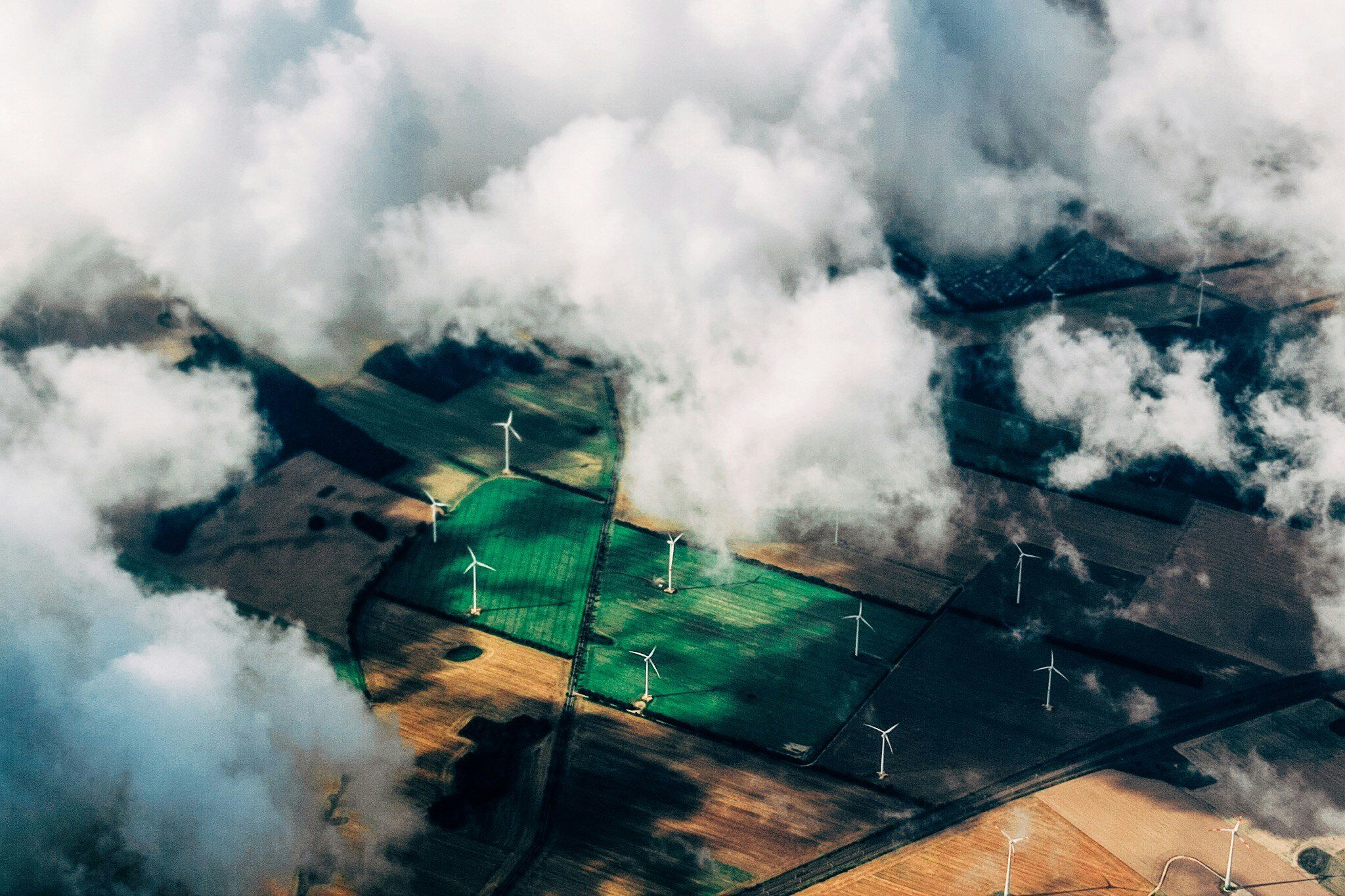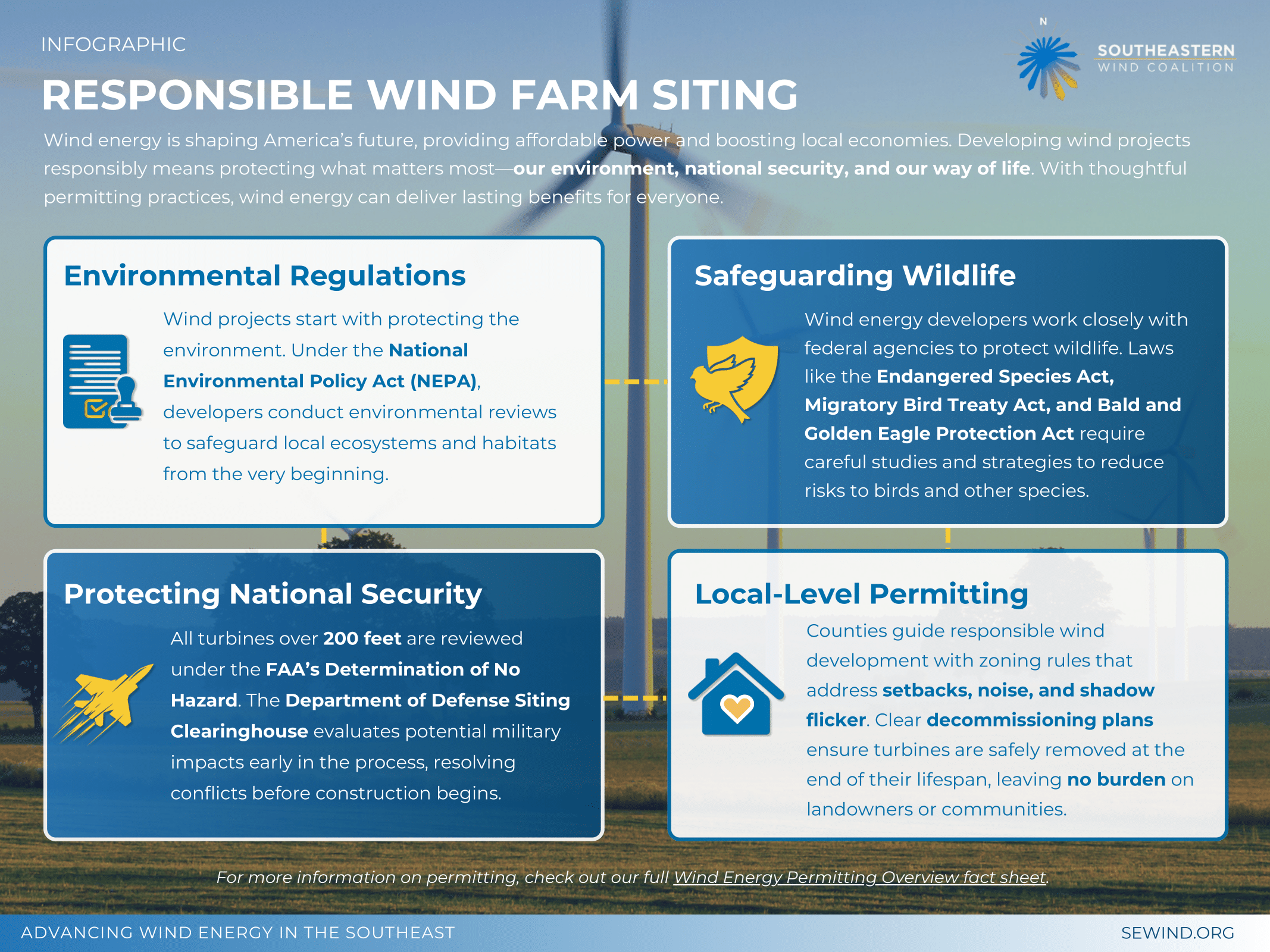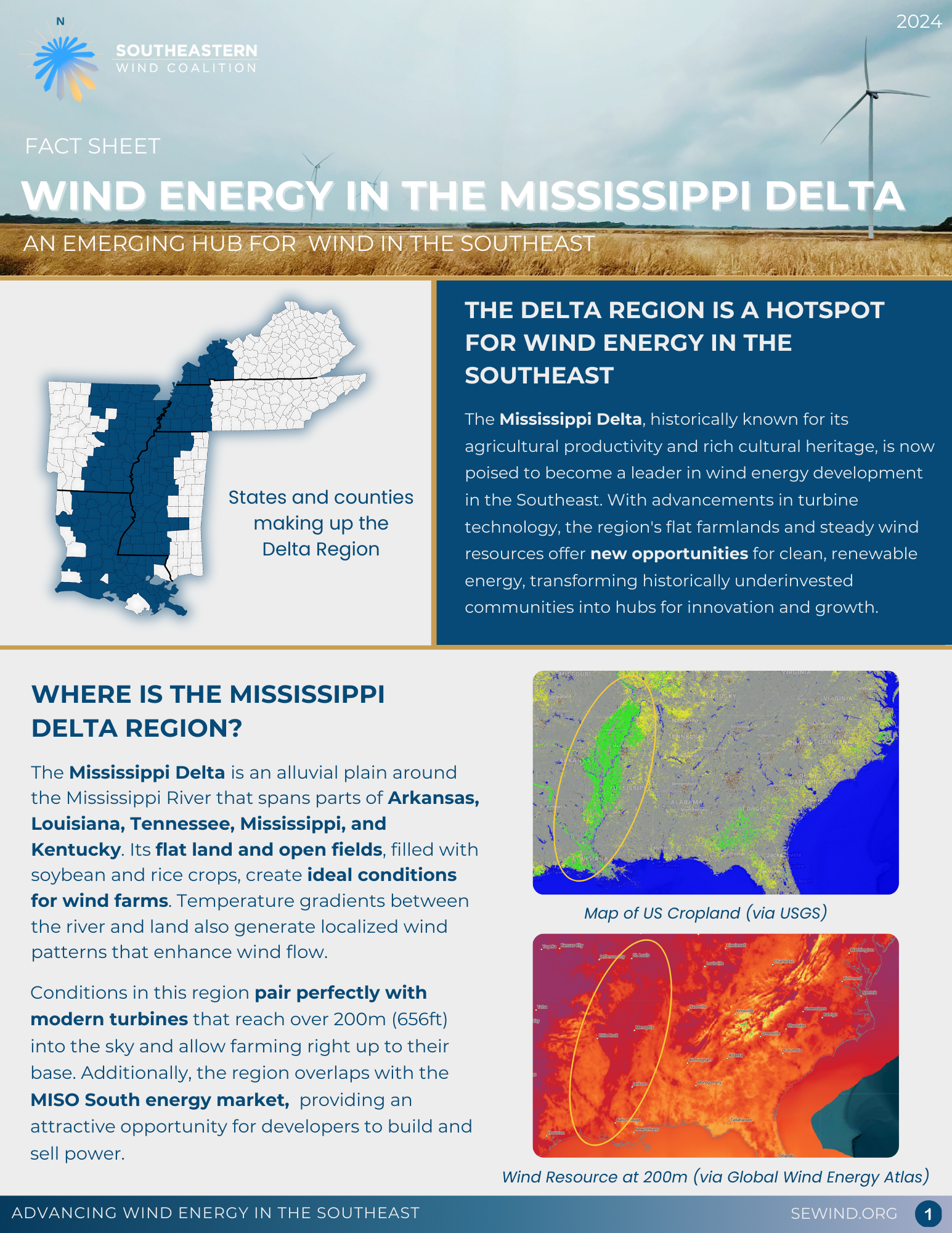
Land-Based Wind
Land-Based Wind is Online in the Southeast
Thanks to advancements in turbine technology, new projects are coming online and in development, driving local investment, creating jobs, and providing clean energy across the region. Explore the videos below to see how these projects are fueling economic growth and a sustainable future for Southeastern communities.
Timbermill Wind Project: Revitalizing Edenton’s Future
Courtesy of Big Dog Little Bed and the North Carolina Sustainable Energy Association, this video showcases the Apex Clean Energy Timbermill Wind Project, which has injected new economic life into Edenton, NC. Once a textile hub, the town is now seeing growth through hundreds of jobs and local business support, including a transformed dye plant now repurposed as a logistics center for turbine components.
Delta Wind: Mississippi Leading the Way
Courtesy of AES, this video celebrates the Delta Wind project, Mississippi’s first land-based wind farm. Delta Wind is setting a precedent for renewable energy in the region, generating both clean power and new economic opportunities for local communities.
Taller Turbines are Unlocking Land-Based Wind for the Southeast
There is a common sentiment that the Southeast lacks sufficient wind for large-scale wind projects. The truth is that it depends on the height of the turbines; the higher you go in the air, the more wind there is. The height of wind turbines used in states such as Oklahoma and Texas were previously insufficient to reach the Southeast’s elevated resources, but this is no longer the case.
The advancement of wind turbine technology, specifically the emergence of “tall wind” turbines with tip heights of up to 700 feet, has been a game-changer for wind energy deployment in the Southeast. These turbines, now commercially available from manufacturers such as Vestas, enable the harnessing of wind resources in regions previously considered unsuitable, including vast areas of the Southeast.
This technological leap was predicted in 2014 when SEWC and the National Renewable Energy Laboratory (NREL) collaborated to create custom maps exploring the potential of taller turbines:
SEWC and NREL's maps highlighting wind expansion potential for the Southeast by using taller turbines. As of Q1 2025, there are at least 20 active land-based wind projects in development in SEWC’s footprint, owing in large part to these turbine advancements.
The Delta Region is a Hotspot for New Wind Projects
As the Western United States approaches its capacity for optimal wind energy sites, attention is shifting to the Southeast, particularly to states in the Delta Region such as Arkansas, Mississippi, Louisiana, Tennessee, and Kentucky. This region is known for its vast agricultural fields and minimal developmental barriers, making it an attractive new frontier for onshore wind energy projects.
A visual comparison of U.S. cropland (USGS) and wind resource potential at 100 meters (Global Wind Energy Atlas).
The Critical Role of Corporate Offtakers for New Wind Projects
Rising energy demand in the Southeast, driven primarily by the growth of data centers and electric vehicle manufacturing, highlights the role of corporate buyers in the region’s wind energy initiatives. Amazon, which is the offtaker for both the Amazon Wind US East in North Carolina (2017) and the Delta Wind project in Mississippi (2024), is expanding its footprint in the region with a $10 billion investment that includes the construction of two data centers in Mississippi. Projects like Delta Wind are critical for supplying clean electrons to the grid, which power these massive data centers and factories. The growing demand from corporations for more clean energy drives the development of such projects, establishing the Southeast as a prime location for wind energy development.
Responsible Wind Farm Siting
Building wind farms responsibly ensures long-term benefits for communities, wildlife, and the environment. Permitting is more than just a regulatory requirement—it’s the foundation for wind projects to succeed while protecting what matters most. By prioritizing safety, collaboration, and sustainability, responsible permitting creates a win for people, wildlife, and clean energy.
Check out the infographic to the right for an overview of how responsible wind farm siting protects the environment, safeguards wildlife, and supports local communities. Click here to view the full-size version.
SEWC’s Responsible Wind Farm Siting Infographic
-
Location: Chowan County, North Carolina
Capacity: 189 MW
Developer: Apex Clean Energy
Highlights: Timbermill Wind is set to become North Carolina’s second land-based wind project. Construction work began in May 2023, with turbine deliveries scheduled for 2024 and full commercial operation beginning in 2024–2025.
Status: Under Construction
-
Location: Tunica County, Mississippi
Capacity: 184.5 MW
Developer: AES
Highlights: Delta Wind Farm is Mississippi’s inaugural utility-scale wind project and the Southeast’s second major wind project, featuring some of North America’s tallest turbines. Vestas’ development arm, Steelhead, originated this historic project, which signaled the start of wind energy development in the Delta Region, and sold it to AES in 2022. Amazon is the offtaker of the project. Development began in 2017 and concluded in 2024.
Status: Online since 2024
-
Location: Pasquotank and Perquimans Counties, North Carolina
Developer: Avangrid
Online Since: 2017
Capacity: 208 MW
Highlights: The Southeast’s first large-scale wind project, Amazon Wind US East, demonstrates the potential for wind energy to support local farmers while advancing corporate sustainability goals.
Status: Online since 2017
-
Location: Anderson County, Tennessee
Capacity: 27 MW
Developer: Invenergy
Highlights: A pioneering utility-scale wind project in the Southwest. Initially established with three pilot turbines by TVA in 2000, Invenergy added additional turbines to the site in 2004. As its 20-year PPA with TVA concludes at the end of 2024, the project’s future is under consideration.
Status: Online since 2004
Online Land-Based Wind Projects in the Southeast
Sorted by Most Recent Projected Online Date
-
Location: Crittenden County, Arkansas
Capacity: 400 MW
Developers: Triple Oak Power
Highlights: Long Grain Wind, located approximately 30 minutes west of Memphis, is Triple Oak Power’s first wind project in the Southeast and is likely to become one of the first wind projects online in Arkansas.
Status: In Development
-
Location: Henderson County, Kentucky
Capacity: 200 MW
Developers: Tensaska and Cordelio Power
Highlights: Rock Bluff Wind Energy Park is set to be Kentucky’s first utility-scale wind project.
Status: In Development
-
Location: Carroll County, Arkansas
Capacity: 180 MW
Developer: Scout Clean Energy
Highlights: Nimbus Wind is the only project in Arkansas that is currently facing organized opposition, but it is expected to proceed.
Status: In Development
-
Location: Pulaski County, Virginia
Capacity: 180 MW
Developer: Apex Clean Energy
Highlights: Pinewood Wind is expected to be one of the first land-based wind projects in Virginia.
Status: In Development
-
Location: Cross County, Arkansas
Capacity: 135 MW
Developer: Steelhead
Highlights: Crossover Wind is on track to become Arkansas’s first operational wind project, setting a precedent for future wind energy developments in the state.
Status: Under Construction
-
Location: Botetourt County, Virginia
Capacity: 78 MW
Developer: Apex Clean Energy
Highlights: Rocky Forge Wind is expected to be one of the first land-based wind projects in Virginia, and is expected to produce enough power for up to 21,000 homes
Status: In Development
Land-Based Wind Projects Under Development in the Southeast
Note: The projects listed below have been publicly announced or listed on developer websites. As of mid-2024, the Southeast has at least eleven additional early-stage, land-based wind projects in development that have yet to be announced.
Sorted By MW Capacity (Descending)












